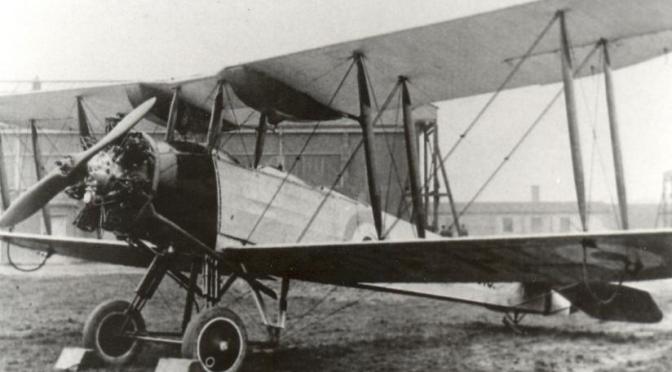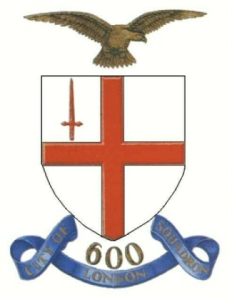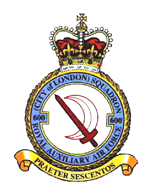600 (City of London) Squadron RAuxAF
Squadron Active:
| From | - | Until |
|---|---|---|
| 14 October 1925 | - | 21 August 1945 |
| 10 May 1946 | - | 10 March 1957 |
| 1 October 1999 | - | Present Day |
Motto:
Latin: Praeter Sescentos
(Translation: “More than six hundred”)
Battle Honours
France and Low Countries, 1940*
Battle of Britain, 1940*
Home defence, 1940–42*
North Africa, 1942–43*
Sicily, 1943*
Italy, 1943–45*
Salerno*
Anzio & Nettuno*
Gustav Line
Gothic Line
The honours marked with an asterix* are those emblazoned on the Squadron Standard
Squadron Codes
MV (Jan 1939 – Sep 1939)
BQ (Sep 1939 – Aug 1943
6 (Aug 1943 – Jul 1944)
RAG (May 1946 – 1949)
LJ (1949 – Apr 1951)
Insignia
No 600 is the only squadron in the RAF/RAuxAF to have two official badges.
The one featuring the City of London crest is called “The Dustcart Crest” as the City badge is found on all vehicles operated by the Corporation of The City of London.
The second badge is called “The Moon and Paperknife” from the City dagger crossing the crescent moon. The design was decided on when the Sqn was based in N Africa and represents the Squadron’s role as a Night Fighter unit at that time. Post war, on the reformation of the Sqn at Biggin Hill as a day fighter Sqn the Officers reverted to the original crest. This was unofficial until the CO, Sqn Ldr David Proudlove spoke to the Honorary Air Commodore about it. She replied that she would “Have a word with her husband about it”. As our HAC was HM Queen Elizabeth, and her husband was King George VI, the authorisation of the second (but to us the first) badge quickly followed. The Herald “Chester King of Arms” was against it, but the King was talked around by our HAC and the Dust Cart badge was approved. We now display both badges, but the Dust Cart Badge is the primary badge of the unit.”
The squadron also holds two Standards, one official (see above) and one ‘unofficial’ and the story of the presentation of the first is also given here in Flt Lt van Geene’s words: –
“In 1931 Sqn Ldr “Freddie Guest” retired to become the Sqn’s first HAC. He handed over command to Sqn Ldr “Stan” Collett who was posted in from 601Sqn to assume command on promotion. Stan was employed as Assistant Company Secretary of the Great Western Railway, and was the son of Sir Charles Collett who was involved in local government in the City of London.
In 1934 the Sqn was involved in the Hendon Air Pageant, and Sqn Ldr Collett chose to fly in the Observer’s position of one of the Squadrons Wapiti aircraft piloted by Fg Off Robert Lea. The aircraft suffered engine failure on take-off (the subsequent Board of Inquiry actually found that the fuel cock had been turned off accidentally) and Lea turned back to the airfield to make a forced landing. He stalled and crashed and the aircraft caught fire. Lea escaped but Collett was knocked unconscious in the crash and died in the fire. His father was Lord mayor of London in the year of his death, and a large scale military funeral followed at St Paul’s Cathedral.
In memory of her son, the Lady Mayoress had a Squadron Standard embroidered, which was presented to the Squadron by her in 1935. It was subsequently carried by the Squadron in the Lord Mayor’s Show that November. At that time, no formation of the RAF or its reserves was authorised to hold a standard. In fact the presentation of Standards to the RAF did not begin until 1953. However the Squadron was given permission to parade with this banner only within the boundary of the City of London as recognition of it’s personal connection with the Lord Mayoralty. This custom was extended, and ratified by King George V on 1 April 1935, so that the Squadron could parade with the banner on St George’s Day of that year. Photographic evidence exists in one of the post war Squadron Scrap Books showing the Squadron under command of Sqn Ldr David Proudlove with the Collett Standard on parade for St Georges Day 1949. The standard continued to be paraded through the streets of the City of London on every Lord Mayor’s Show until the Squadron was disbanded in 1957.
The official records containing the letters authorising the custom were lost following the disbandment of the Squadron. Currently evidence exists only in the form of the photograph mentioned above, an article in Flight magazine dated 3 Nov 1949 which mentioned the custom, a further article written by Wg Cdr J Meadows, ex CO of the Sqn in Aeroplane Monthly in April 1987 and personal testimony from several members of the Sqn Association who were on parade when the Collett Standard was carried.”
No. 600 (City of London) Squadron RAuxAF is a squadron of the RAF Reserves. It was formed in 1925 and operated as a night fighter squadron during the Second World War with great distinction. After the war, 600 Squadron went on to operate jet fighters until 1957. Reactivated in 1999, 600 Squadron is the only RAF Reserve unit within the M25. It is a Headquarters Support Squadron and provides trained part-time reservists to support RAF operations around the world.
History
Formation
No. 600 (City of London) Squadron RAuxAF was formed at RAF Northolt on 14 October 1925 as a unit of the Auxiliary Air Force, equipped with Avro 504 trainers and Airco DH.9A day bombers. It moved to RAF Hendon at the end of 1926, replacing its DH.9As, veterans of the First World War, with more modern Westland Wapitis in 1929. It was designated a fighter squadron in July 1934. On the outbreak of war day and night patrols were flown, experiments with airborne radar beginning in December 1939. When the Germans invaded Holland, the squadron flew patrols over the Low Countries but in view of the inadequacy of Blenheims for daylight operations, 600 Sqn was allocated to night defence only a few days later.
In World War II
In September 1940 the first Bristol Beaufighter was received, conversion being completed early in 1941. In October 1940 the squadron moved to Yorkshire and in March 1941 to south-west England, where it remained until September 1942. In November 1942, 600 Sqn moved to North Africa to provide night cover for Allied bases and shipping. It was transferred to Malta in June 1943, and in September, to Italy where it spent the rest of the war on night defence and intruder missions. Re-equipment with Mosquitoes began in January 1945 and on 21 August 1945 the squadron disbanded, having become the highest scoring night fighter squadron in the RAF.
Post-war
On 10 May 1946, 600 Sqn reformed at RAF Biggin Hill, as a day fighter squadron of the Auxiliary Air Force with Spitfires. It began to recruit during June and received its first operational aircraft in October. After receiving a De Havilland Vampire in October 1949 for jet conversion, it was allotted Meteors in March 1950 and flew these until the Royal Auxiliary Air Force disbanded on 10 March 1957.
Present
Reforming on 1 October 1999 at RAF Northolt from No. 1 and No. 3 Maritime Headquarters Units, 600 Squadron is now a Headquarters Support Squadron of the RAuxAF, tasked to provide manpower to RAF static and mobile HQ’s at home and overseas. Currently 5 “Operational” Flights exist, these being Operations, Intelligence, Communications, Administration and Logistics. Squadron personnel have deployed to Iraq, Afghanistan, the Gulf States and into positions within the UK.
In 2007 the Corporation of the City of London granted 600 Squadron “Privileged Regiment Status”, an ancient honour granted to only 8 military formations in the history of the City. 600 Squadron is regularly involved in ceremonial events in London and in November 2007 provided a Guard of Honour to the Lord Mayor on his return to the Mansion House after taking the oath of allegiance at the Royal Courts of Justice.
600 (City of London) Squadron RAuxAF actively seeks to recruit and train motivated men and women who live within a 50 mile radius of RAF Northolt, with or without prior armed forces experience, and who have an interest in supporting the RAF in their spare-time. Further information can be found on the RAF Reserves website.
Aircraft Operated by No.600 Squadron
| From | To | Aircraft |
|---|---|---|
| Oct 1925 | Oct 1929 | Avro 504K |
| Oct 1925 | Oct 1929 | de-Havilland DH9A |
| Aug 1929 | Jan 1935 | Westland Wapiti IIa |
| Aug 1929 | Jan 1935 | Avro Tutor |
| Jan 1935 | May 1937 | Hawker Hart |
| Feb 1937 | Apr 1939 | Hawker Demon |
| Jan 1939 | Oct 1941 | Bristol Blenheim IV |
| Sep 1940 | Jun 1941 | Bristol Beaufighter If |
| Apr 1941 | Apr 1942 | Bristol Beaufighter IIf |
| Mar 1942 | Feb 1945 | Bristol Beaufighter VIf |
| Dec 1944 | Aug 1945 | de-Havilland Mosquito XIX |
| Oct 1946 | Nov 1947 | Supermarine Spitfire F14e |
| Apr 1947 | Nov 1950 | Supermarine Spitfire F.21 |
| Sep 1948 | Mar 1950 | Supermarine Spitfire F.22 |
| Mar 1950 | Apr 1952 | Gloster Meteor F.4 |
| Nov 1951 | Mar 1957 | Gloster Meteor F.8 |
Officers Commanding no. 600 Squadron
| From | To | Name |
|---|---|---|
| Oct 1925 | 1926 | W/Cdr. A.W.H. James. MC |
| 1926 | 1931 | S/Ldr. the Hon. F.E. Guest |
| 1931 | Jul 1934 | S/Ldr. S.B. Collett |
| Jul 1934 | Jun 1937 | S/Ldr. P.G. Stewart |
| Jun 1937 | Dec 1939 | S/Ldr. G.L.S. Dawson Damer. the Viscount Carlow |
| Dec 1939 | May 1940 | S/Ldr. J.M. Wells |
| May 1940 | Sep 1940 | F/Lt. de B. Clarke |
| Sep 1940 | Nov 1940 | S/Ldr. H.L. Maxwell DSO |
| Nov 1940 | Jan 1941 | S/Ldr. C.A. Pritchard[23] |
| Jan 1941 | Dec 1941 | W/Cdr. G. Stainforth AFC |
| Dec 1941 | May 1942 | W/Cdr. H.M. Pearson DFC |
| May 1942 | Nov 1942 | W/Cdr. A.G. Miller DFC Order of Lenin |
| Nov 1942 | Dec 1942 | W/Cdr. J.R. Watson |
| Dec 1942 | Mar 1944 | W/Cdr. C.P. Green DSO DFC |
| Mar 1944 | Dec 1944 | W/Cdr. L.H. Styles DFC |
| Dec 1944 | Aug 1945 | W/Cdr. A.H. Drummond |
| Jul 1946 | Jul 1948 | S/Ldr. T.N. Hayes DFC |
| Jul 1948 | Aug 1950 | S/Ldr. D.E. Proudlove |
| Aug 1950 | Oct 1953 | S/Ldr. J.P. Meadows DFC AFC |
| Oct 1953 | Mar 1957 | S/Ldr. J. McCormack AFC |
| 1999 | Wg/Cdr. E. Partridge OBE DL | |
| 2001 ? | TBA | |
| Wg/Cdr. T. Lynn | ||
| Dec 2009 | Wg/Cdr. S. Ahearn AE | |
| Dec 2009 | Nov 2011 | Wg/Cdr. M. Crossman |
| Nov 2011 | Wg/Cdr. I. Tripp | |
| Acting OC - S/Ldr S. Duddy | ||
| Wg/Cdr. A Calame MVO MBE MA |
Honorary Air Commodores of No. 600 Squadron
| From | To | Name |
|---|---|---|
| 1931 | 1937 | The Rt Hon F.E. Guest |
| 1937 | 1941 | Lord Lloyd |
| 1942 | 1949 | Sir Archibald Sinclair |
| 1949 | 1957 | HM The Queen (The Queen Mother from 1952) |
| 1999 | 1999 | Sir Adrian Swire |
| 1999 | 2002 | HM The Queen Mother |
| 2006 | Present Day | Air Cdre The Right Honourable The Viscount Trenchard of Wolfeton DL. |
Bases and Airfields used by No.600 Squadron
| From | To | Base |
|---|---|---|
| 14 Oct 1925 | 18 Jan 1927 | RAF Northolt, Middlesex |
| 18 Jan 1927 | 1 Oct 1938 | RAF Hendon, Middlesex |
| 1 Oct 1938 | 3 Oct 1938 | RAF Kenley, Surrey |
| 3 Oct 1938 | 25 Aug 1939 | RAF Hendon, Middlesex |
| 25 Aug 1939 | 2 Oct 1939 | RAF Northolt, Middlesex |
| 2 Oct 1939 | 16 Oct 1939 | RAF Hornchurch, Essex |
| Detachment to: | RAF Manston, Kent | |
| 16 Oct 1939 | 20 Oct 1939 | RAF Rochford, Essex |
| 20 Oct 1939 | 27 Dec 1939 | RAF Hornchurch, Essex |
| 27 Dec 1939 | 16 May 1940 | RAF Manston, Kent |
| 16 May 1940 | 20 Jun 1940 | RAF Northolt, Middlesex |
| 20 Jun 1940 | 22 Aug 1940 | RAF Manston, Kent |
| 22 Aug 1940 | 12 Sep 1940 | RAF Hornchurch, Essex |
| 12 Sep 1940 | 12 Oct 1940 | RAF Redhill, Surrey |
| 12 Oct 1940 | 14 Mar 1941 | RAF Catterick, North Yorkshire |
| Detachments to: | RAF Drem, East Lothian Scotland RAF Acklington, Northumberland RAF Prestwick, Ayrshire |
|
| 14 Mar 1941 | 27 Apr 1941 | RAF Drem, East Lothian, Scotland |
| Detachment to: | RAF Prestwick, Ayrshire | |
| 27 Apr 1941 | 18 Jun 1941 | RAF Colerne, Wiltshire |
| 18 Jun 1941 | 27 Jun 1941 | RAF Fairwood Common, Gower, Wales |
| Detachment to: | RAF Predannack, Cornwall | |
| 27 Jun 1941 | 6 Oct 1941 | RAF Colerne, Wiltshire |
| Detachment to: | RAF Predannack, Cornwall | |
| 6 Oct 1941 | 2 Sep 1942 | RAF Predannack, Cornwall |
| 2 Sep 1942 | 14 Nov 1942 | RAF Church Fenton, North Yorkshire |
| 14 Nov 1942 | 18 Nov 1942 | RAF Portreath, Cornwall |
| 18 Nov 1942 | 7 Dec 1942 | RAF Blida, Algeria |
| 7 Dec 1942 | 3 Jan 1943 | RAF Maison Blanche, Algeria |
| 3 Jan 1943 | 25 Jun 1943 | Setif, Algeria |
| Detatchments to: | Souk-el-Khemis 'Paddington', Tunisia Bone, Tunisia Tingley, Algeria Monastir, Tunisia |
|
| 25 Jun 1943 | 26 Jul 1943 | RAF Luqa, Malta |
| 26 Jul 1943 | 30 Sep 1943 | Cassibile (Sicily), Italy |
| 30 Sep 1943 | 2 Feb 1944 | Montecorvino Airfield, Italy |
| Detatchments to: | Brindisi, Italy Tortorella, Italy Gaudo, Italy Lago, Italy |
|
| 2 Feb 1944 | 22 Mar 1944 | Marcianise, Italy |
| 22 Mar 1944 | 1 Apr 1944 | Pomigliano, Italy |
| 1 Apr 1944 | 13 Jun 1944 | Marcianise, Italy |
| 13 Jun 1944 | 19 Jun 1944 | La Banca, Italy |
| 19 Jun 1944 | 5 Jul 1944 | Voltone, Italy |
| 5 Jul 1944 | 29 Jul 1944 | Follonica, Italy |
| 29 Jul 1944 | 25 Aug 1944 | Rosignano, Italy |
| Detachment to: | Falconara, Italy | |
| 25 Aug 1944 | 15 Dec 1944 | Falconara, Italy |
| Detatchment to: | Rosignano Iesi, Italy Bellaria, Italy |
|
| 15 Dec 1944 | 24 May 1945 | Cesenatico, Italy |
| 24 May 1945 | 26 Jul 1945 | Campoformido, Italy |
| 26 Jul 1945 | 21 Aug 1945 | Aviano, Italy |
| 10 May 1946 | 10 Mar 1957 | RAF Biggin Hill, Kent |
| 1 Oct 1999 | Present Day | RAF Northolt, Middlesex |




